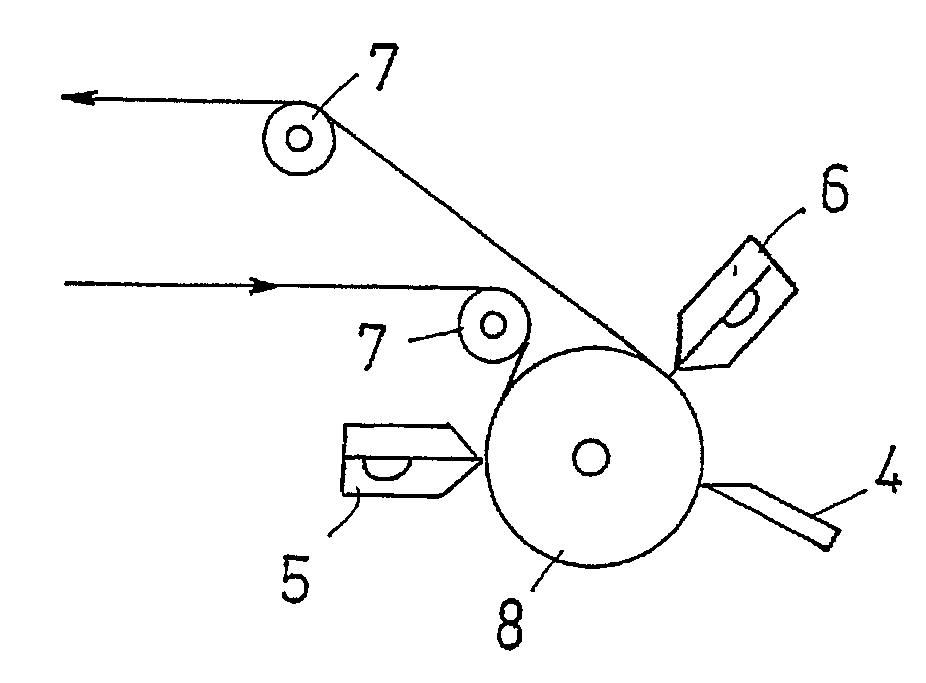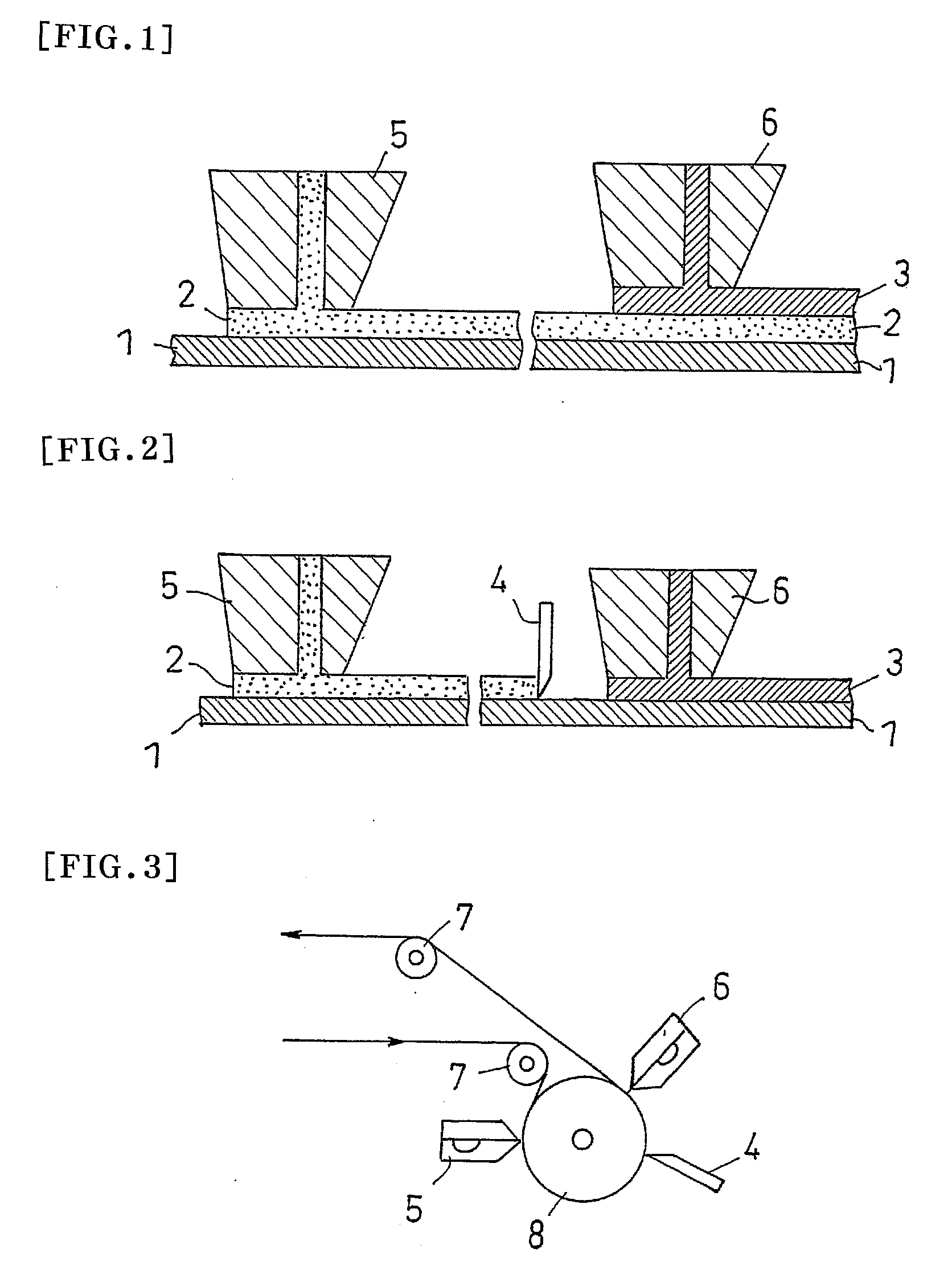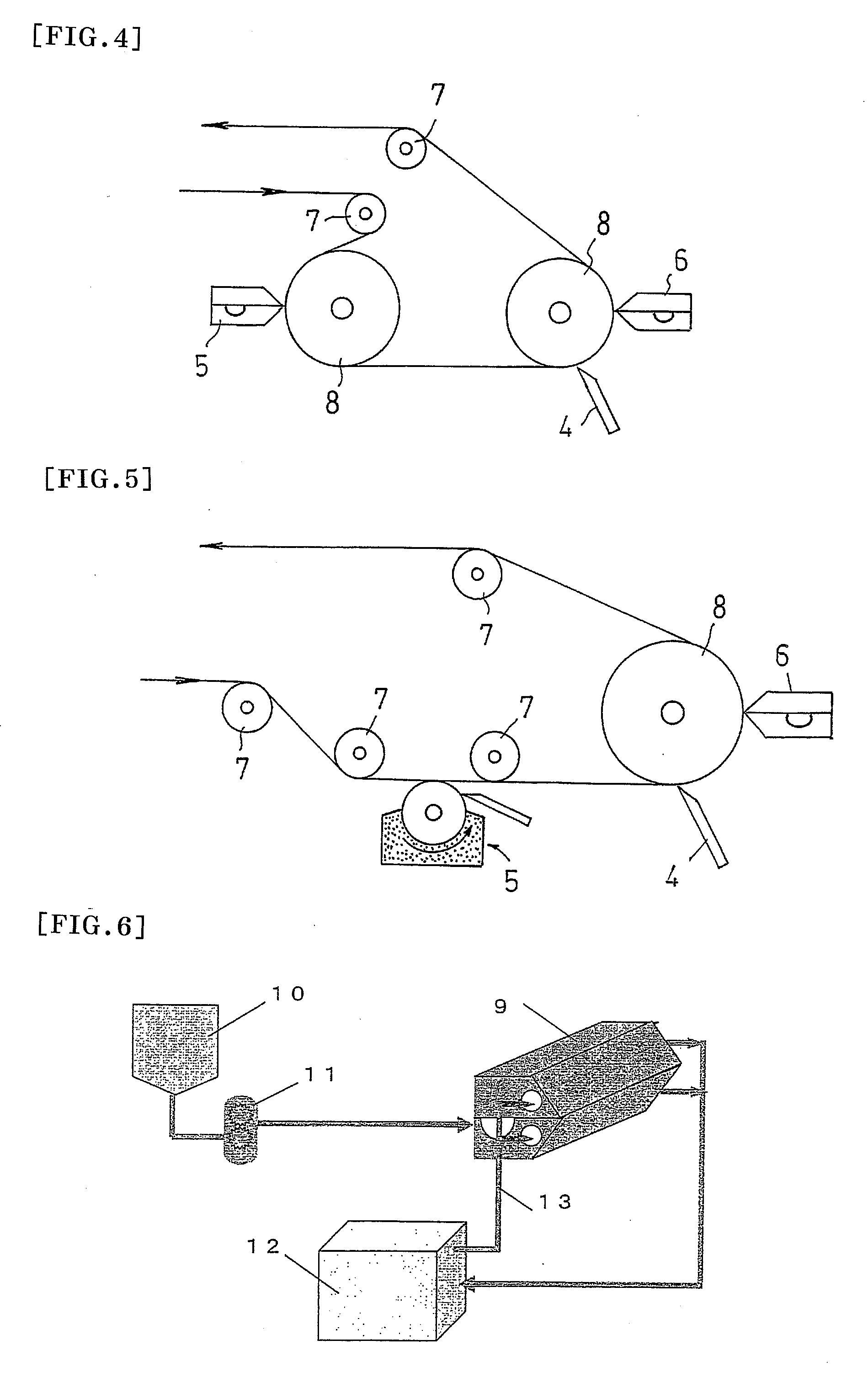Process for producing composite reverse osmosis membrane
a reverse osmosis membrane and composite technology, applied in the direction of membranes, separation processes, filtration separation, etc., can solve the problems of cellulose acetate membranes having a disadvantage of easy deterioration by organisms or hydrolysis, unable to exhibit sufficient performance to give a higher amount of permeated water, and the method has the following defects, etc., to achieve stable production, reduce the amount of amine, and simplify the effect of subsequent washing operation
- Summary
- Abstract
- Description
- Claims
- Application Information
AI Technical Summary
Benefits of technology
Problems solved by technology
Method used
Image
Examples
example 1
[0094]An aqueous solution α-1 containing 3% by weight of m-phenylenediamine, 0.15% by weight of sodium lauryl sulfate, 3% by weight of triethylamine, 6% by weight of camphorsulfonic acid, and 6% by weight of isopropyl alcohol, and an organic solution β-1 containing 0.25% by weight of trimesic acid trichloride (organic solvent: IP solvent) were prepared. Using an apparatus shown in FIG. 4, the porous support was conveyed at a speed of 20 m / minute, and the aqueous solution α-1 was applied on the porous support so that 30 micrometers of thickness might be given by a slot die coater to form a covering layer of the aqueous solution. Subsequently, at a point of time of 0.9 m conveyance, that is, 2.7 seconds after application of the aqueous solution α-1, the covering layer of the aqueous solution was substantially completely removed by a rubber blade wiper. Then, the porous support was conveyed to a slot die coater installed immediately after the wiper, the organic solution β-1 was applied...
example 2
[0103]Using the apparatus shown in FIG. 5, a composite reverse osmosis membrane was produced by the same method as in Example 1 except for having used a microgravure coater as an application means of the aqueous solution α-1.
[0104]The performance test by the same method as in Example 1 of the obtained composite reverse osmosis membrane gave a salt-blocking rate of 99.84% by permeated liquid electric conductivity and a permeation flux of 1.64 m3 / m2·day.
example 3
[0105]Prepared were an aqueous solution α-2 containing 3% by weight of m-phenylenediamine, 0.15% by weight of sodium lauryl sulfate, 3% by weight of triethylamine, 6% by weight of camphorsulfonic acid, and 12% by weight of isopropyl alcohol, and an organic solution β-1 (organic solvent: IP solvent) containing 0.25% by weight of trimesic acid trichloride. Using an apparatus shown in FIG. 3, the porous support was conveyed at a speed of 20 m / minute, and the aqueous solution α-2 was applied on the porous support so that 40 micrometers of thickness might be given by a slot die coater to form a covering layer of the aqueous solution. Subsequently, at a point of time of 0.2 m conveyance, that is, 0.6 seconds after application of the aqueous solution α-2, the covering layer of the aqueous solution was substantially completely removed by an air knife (speed: 100 m / minute). Measured results of the weight of the support before application of the aqueous solution α-2 and the weight of the supp...
PUM
| Property | Measurement | Unit |
|---|---|---|
| surface temperature | aaaaa | aaaaa |
| thickness | aaaaa | aaaaa |
| thickness | aaaaa | aaaaa |
Abstract
Description
Claims
Application Information
 Login to View More
Login to View More - R&D
- Intellectual Property
- Life Sciences
- Materials
- Tech Scout
- Unparalleled Data Quality
- Higher Quality Content
- 60% Fewer Hallucinations
Browse by: Latest US Patents, China's latest patents, Technical Efficacy Thesaurus, Application Domain, Technology Topic, Popular Technical Reports.
© 2025 PatSnap. All rights reserved.Legal|Privacy policy|Modern Slavery Act Transparency Statement|Sitemap|About US| Contact US: help@patsnap.com



